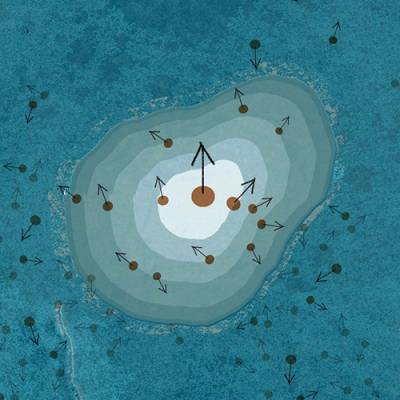Electrical control of single atom magnets
12 December 2013
Electrical control of single atom magnets
The energy needed to change the magnetic orientation of a single atom – which determines its magnetic stability and therefore its usefulness in a variety of future device applications – can be modified by varying the atom’s electrical coupling to nearby metals.
This striking result was published today in the journal Nature Nanotechnology by an international group of scientists working at the London Centre for Nanotechnology (LCN) at UCL, the Iberian Nanotechnology Laboratory (Portugal), the University of Zaragoza (Spain), and the Max Planck Institute of Microstructure Physics (Germany).
Anyone playing with two magnets can experience how they repel or attract each other depending on the relative orientation of their magnetic poles. The fact that in a given magnet these poles lie along a specific direction rather than being randomly oriented is known as magnetic anisotropy, and this property is exploited in a variety of applications ranging from compass needles to hard drives.

Using a scanning tunnelling microscope, an instrument capable of observing and manipulating an individual atom on a surface, LCN researchers and their colleagues discovered a new mechanism that controls magnetic anisotropy at the atomic scale.
In their experiment, the research team observed dramatic variations in the magnetic anisotropy of individual cobalt atoms depending on their location on a copper surface capped with an atomically-thin insulating layer of copper nitride.
These variations were correlated with large changes in the intensity of another phenomenon – the Kondo effect – that arises from electrical coupling between a magnetic atom and a nearby metal. With the help of theoretical and computational modelling performed in Germany and Portugal, the researchers found that, in addition to the conventional structural mechanisms, the electronic interactions between the metal substrate and the magnetic atom can also play a major role in determining magnetic anisotropy.
“Electrical control of a property that formerly could only be tuned through structural changes will enable significant new possibilities when designing the smallest possible devices for information processing, data storage, and sensing,” said LCN researcher Dr Cyrus Hirjibehedin.
In contrast to the more conventional mechanisms, this contribution to the magnetic anisotropy can be tuned electrically using the same process that drives many transistors, the field effect. These results are particularly timely because they support efforts to find material systems with large magnetic anisotropy that are free of rare earth elements, scarce commodities whose mining has large environmental impact.
Notes
- The research appears in a paper published in the journal Nature Nanotechnology, entitled “Control of single-spin magnetic anisotropy by exchange coupling”
Related links
High-resolution image
Artist’s impression of magnetic anisotropy
This image is Creative Commons Attribution-NoDerivatives licensed, and so may be reproduced freely providing the credits are retained and the artwork is not modified.
 Close
Close

